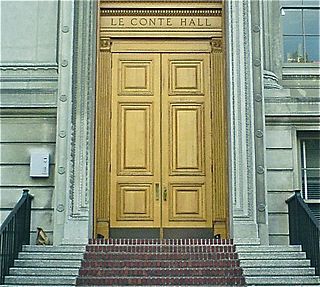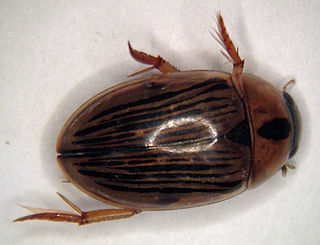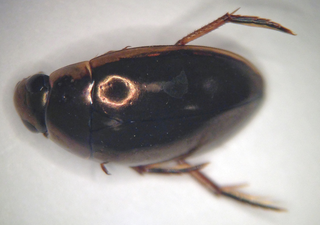
LeConte's sparrow, also known as LeConte's bunting, is one of the smallest New World sparrow species in North America.

John Lawrence LeConte MD was an American entomologist, responsible for naming and describing approximately half of the insect taxa known in the United States during his lifetime, including some 5,000 species of beetles. He was recognized as the foremost authority on North American beetles during his career, and has been described as "the father of American beetle study".

Joseph Le Conte was a physician, geologist, professor at the University of California, Berkeley, and early California conservationist.

John Eatton Le Conte Jr. was an American naturalist. He was born near Shrewsbury, New Jersey, the son of John Eatton Le Conte and Jane Sloane Le Conte. He graduated from Columbia College, where he showed an interest in science and was taught natural history by David Hosack, founder of Elgin Botanical Garden.

Hydrochus is the only living genus of beetle in the family Hydrochidae, which belongs to the superfamily Hydrophiloidea, and was formerly treated as a subfamily of Hydrophilidae. Hydrochus includes about 180 species, which are found worldwide. The name "Hydrochus" has also been used for a fly genus in the family Dolichopodidae, but this is a junior subjective synonym of the genus Rhaphium.

LeConte Hall is the former name of a building on the campus of the University of California, Berkeley, which is home to the physics department. LeConte Hall was one of the largest physics buildings in the world at the time it was opened in 1924, and was also the site of the first atom collider, built by Ernest O. Lawrence in 1931.

Berosus is a genus of beetles in the family Hydrophilidae, the water scavenger beetles. The genus contains 273 species. It is distributed worldwide.

Enochrus, a genus of water scavenger beetles, is the third-largest genus of hydrophilids with 222 species in six subgenera worldwide.
Berosus aculeatus is a species of hydrophilid beetle native to the United States and Cuba. It was originally described by John Lawrence LeConte in 1855 and is characterized by prolonged apices of its elytra.
Berosus pugnax is a species of hydrophilid beetles native to the United States. It was originally described by John Lawrence LeConte in 1863 and is characterized by having emarginate apices on its elytra.
Berosus ordinatus is a species of hydrophilid beetles native to the United States, specifically in the states of Maryland, Delaware, New York, New Jersey, Pennsylvania, Connecticut, and Rhode Island. It was originally described by John Lawrence LeConte in 1855 and is characterized by slightly divergent and prolonged elytral apices.

Tropisternus is a genus of hydrophilid beetles with 63 species in five subgenera in North and South America.

Tropisternus lateralis is a species of hydrophilid beetle that ranges across much of the Americas.

Hydrochara is a genus of hydrophilid beetles with 23 species in North America, Europe, Asia, and Africa.

Cercyon is a genus of water scavenger beetles in the family Hydrophilidae. There are at least 50 described species in Cercyon.
Oosternum is a genus of water scavenger beetles in the family Hydrophilidae. There are more than 20 described species in Oosternum.
Enochrus pygmaeus is a species of water scavenger beetle in the family Hydrophilidae. It is found in the Caribbean Sea, Central America, and North America.
Derallus is a genus of water scavenger beetles in the family Hydrophilidae. There are about six described species in Derallus.

Cryptopleurum is a genus of water scavenger beetles in the family Hydrophilidae. There are about 11 described species in Cryptopleurum.













